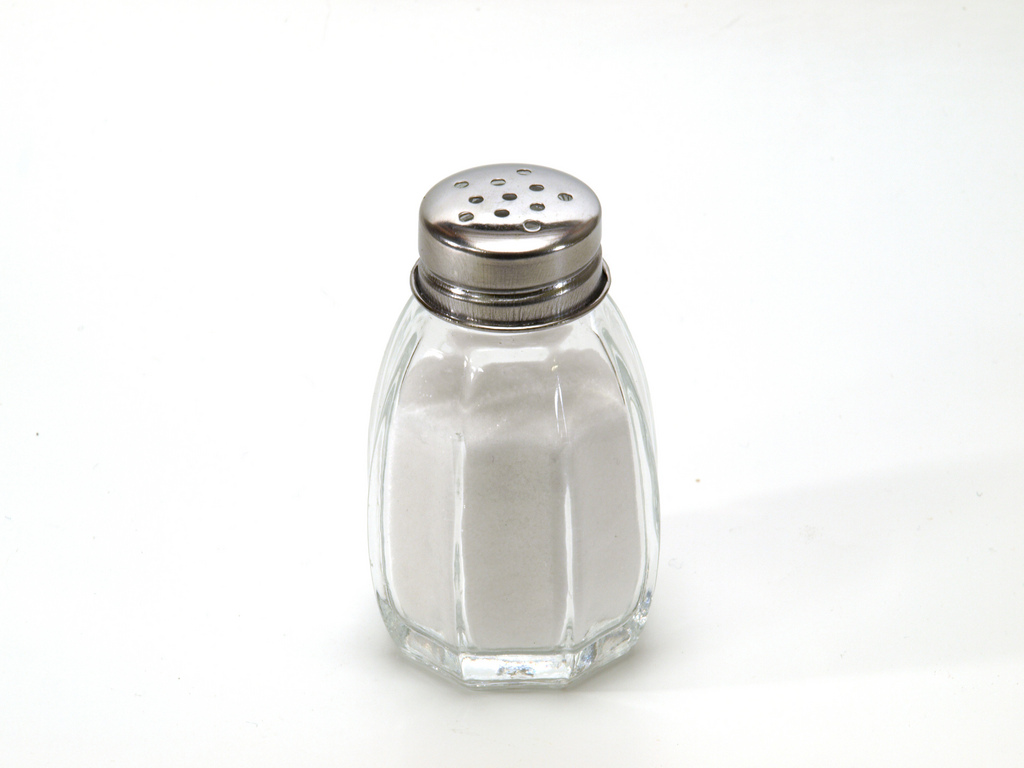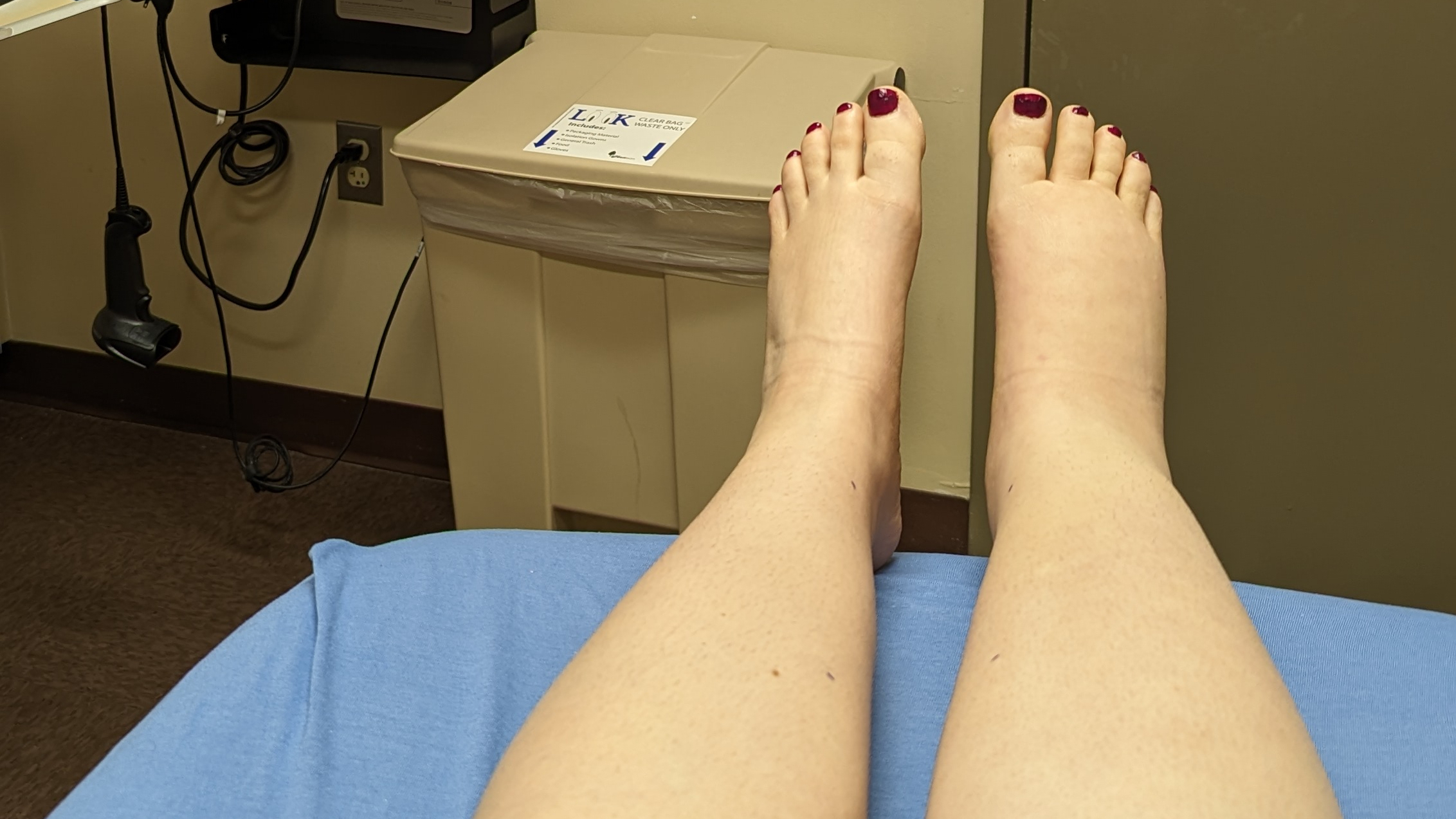The Lymphie Life is back in action, and what better way to make a comeback than with an informative post about sodium?!
Granted it’s not the most exciting topic, but it’s an important one—especially for us lymphies.
“You cannot exist without sodium, but the amount we need is minor.”
-Alicia Moag-Stahlberg, research nutritionist at Northwestern University Medical School and a spokeswoman for the American Dietetic Association (source)
Sodium is an electrolyte that is vital to a number of functions in the body, such as fluid distribution, blood pressure, cellular work, and electrical activity. Our bodies regulate our sodium levels to ensure that the concentration remains within a narrow range—if it swings too high or too low, serious health problems (like high blood pressure and increased risk of heart disease and stroke) could result.
High levels of sodium can also cause the body to retain fluid, which, as lymphies, we already have enough of going on (!). Consuming excess amounts of sodium makes our swelling worse; I know that my leg feels “heavier” after I eat a particularly salty meal, and I’ve heard similar experiences from other lymphies. Despite there not being an “official” guideline for lymphies regarding sodium intake, it stands to reason that minimizing excess sodium will help manage lymphedema. Obviously, adhering to a lower-sodium diet isn’t going to make the edema disappear, but it will prevent any extra swelling due to unnecessary high sodium intake. Plus, reducing your salt intake is a great habit with a lot of overall health benefits!
As Americans, we are consuming a lot more sodium than is necessary. The 2010 Dietary Guidelines for Americans recommended limiting sodium to less than 2,300 milligrams per day (less if you are over the age of 51, or have high blood pressure, diabetes, or chronic kidney disease), yet the average daily sodium intake for Americans is more than 3,400 mg.
According to the Centers for Disease Control and Prevention, more than 75% of this comes from prepackaged and processed foods and foods made in restaurants. Only 5% of dietary sodium is added during home cooking while another 6% is added at the table. The remaining 12% of dietary sodium occurs naturally in foods.
More than 40% of sodium intake comes from the following ten types of foods:
- Breads and rolls
- Cold cuts and cured meats (i.e. deli meats or packaged lunch meats)
- Pizza
- Fresh and processed poultry
- Soups
- Sandwiches
- Cheese
- Pasta dishes
- Meat dishes
- Snacks (i.e. chips, pretzels, and popcorn)
Some of those categories are a little surprising, but just because a food item doesn’t taste salty or appears to be otherwise healthy doesn’t mean the sodium isn’t there.
It’s important to know which foods are the biggest contributors to your sodium intake so that you can keep it at a healthy level, and one of the easiest ways to do that is to check Nutrition Facts labels for the sodium content per serving. Anything that is listed as 5% or less of the percent Daily Value (% DV) is low and anything 20% or more is high; you generally don’t want to exceed a total of 65-100% DV for sodium from all foods in a day. Remember that things labeled as “reduced sodium” can still contain significant amounts, and also that sodium levels of the same foods can vary widely by brand—so always check the labels and compare!
In addition to checking the Nutrition Facts, take a peek at the ingredients list for these names: sodium nitrate, monosodium glutamate, sodium bicarbonate, and sodium citrate. These ingredients are other sources of dietary sodium and should be avoided if possible.
Here are some more tips to try:
- Eat at home more often, preparing your meals from scratch using low-sodium or sodium-free foods alongside fresh ingredients.
- Modify how you cook at home by slowly cutting back on the amount of salt added when you’re cooking, rinsing canned products to reduce the amount of sodium, and refraining from adding salt to the water when cooking beans, rice, pasta, and vegetables.
- Cut back on high-sodium meats like bologna, ham, hot dogs, and sausage.
- Fill your salt shaker with a mix of different herbs and spices to use (such as black pepper, paprika, onion powder, or garlic powder) instead of table salt to flavor foods. Fresh lemon juice is another great alternative flavoring.
- Eat fresh fruits and veggies instead of salty snacks.
- Drink lots of water, which will help flush excess sodium from your body. Avoid sodas—both diet and regular varieties—as well as drinks containing vegetable juices, as these are often high in sodium.
- Eat potassium-rich foods, such as beans, leafy greens, potatoes, yogurt, and bananas.
The following two sections are from the Centers for Disease Control and Prevention:
Tips for Lowering Sodium at the Supermarket
- Buy fresh, frozen (no sauce), or no salt added canned vegetables.
- Use fresh poultry,* fish, pork,* and lean meat, rather than canned or processed meats.
- When available, buy low sodium, lower sodium, reduced sodium, or no salt added versions of products.
- Limit your use of sauces, mixes, and “instant” products, including flavored rice and ready-made pasta.
- Compare Nutrition Facts labels on food packages for Percent Daily Value or amount of sodium in milligrams.
* Check to see if saline or salt solution has been added—if so, choose another brand.
Tips for Lowering Sodium While Eating Out
Restaurant foods are a major source of sodium in most Americans’ diets, so it pays to take a few minutes to find out what’s in the food you’re eating. Planning ahead also can help you find restaurants that have information on sodium levels in the foods they serve.
To reduce your sodium when you are eating out at a restaurant:
- Check online for nutritional information before you go if you are eating at a chain restaurant or fast-food outlet. Some independent restaurants also post this information on their Web sites.
- Ask your server for information about the amount of sodium in your food. Sometimes this information is printed on the menu.
- Request that no salt be added to your food.
- Beware of hidden sources of sodium such as sauces and dressings, and ask for these toppings on the side.
Have you noticed your sodium intake affecting your lymphedema? What are some ways you reduce sodium in your daily diet?
Useful Resources:
- How to Reduce Sodium – Centers for Disease Control and Prevention
- Salt Homepage – Centers for Disease Control and Prevention
- Sodium Reduction Fact Sheets – Centers for Disease Control and Prevention
- Salt and Lymphedema – Lymph Notes
- How to Correct High Sodium Levels in the Body – Livestrong
- Importance of Sodium – Livestrong
Saltshaker photo by SoraZG on Flickr.





Leave a Reply